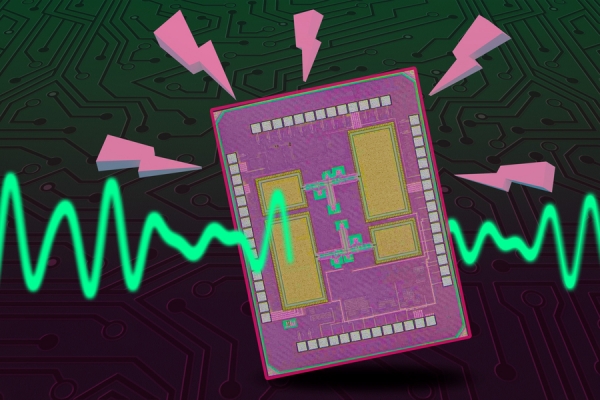Scientists are striving to develop ever-smaller internet-of-things devices, like sensors tinier than a fingertip that could make nearly any object trackable. These diminutive sensors have miniscule batteries which are often nearly impossible to replace, so engineers incorporate wake-up receivers that keep devices in low-power “sleep” mode when not in use, preserving battery life.
Researchers at MIT have developed a new wake-up receiver that is less than one-tenth the size of previous devices and consumes only a few microwatts of power. Their receiver also incorporates a low-power, built-in authentication system, which protects the device from a certain type of attack that could quickly drain its battery.
Many common types of wake-up receivers are built on the centimeter scale since their antennas must be proportional to the size of the radio waves they use to communicate. Instead, the MIT team built a receiver that utilizes terahertz waves, which are about one-tenth the length of radio waves. Their chip is barely more than 1 square millimeter in size.
Read more at Massachusetts Institute of Technology
Image: Researchers from MIT and elsewhere have built a wake-up receiver that communicates using terahertz waves, which enabled them to produce a chip more than 10 times smaller than similar devices. Their receiver, which also includes authentication to protect it from a certain type of attack, could help preserve the battery life of tiny sensors or robots. Credits: Jose-Luis Olivares/MIT with figure courtesy of the researchers


